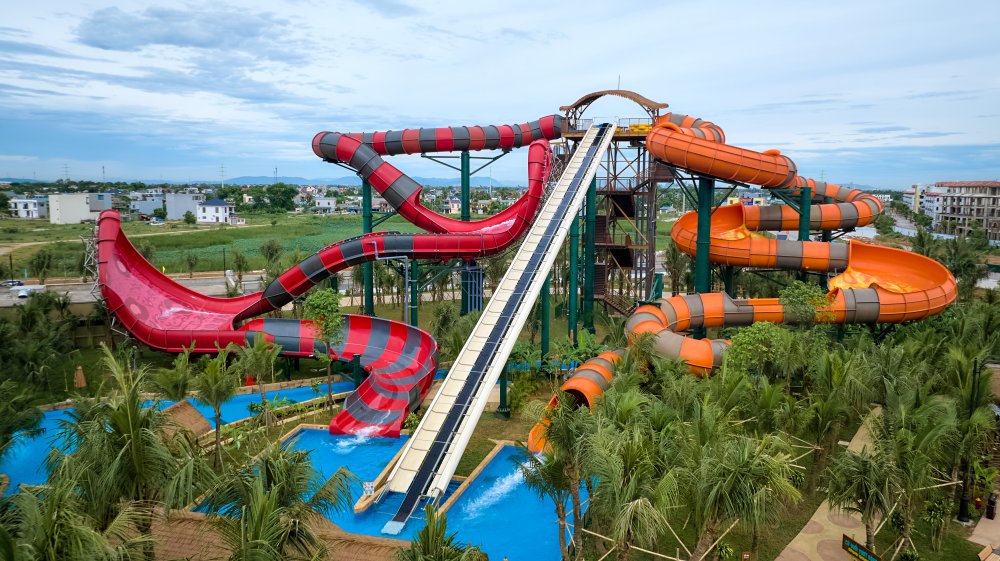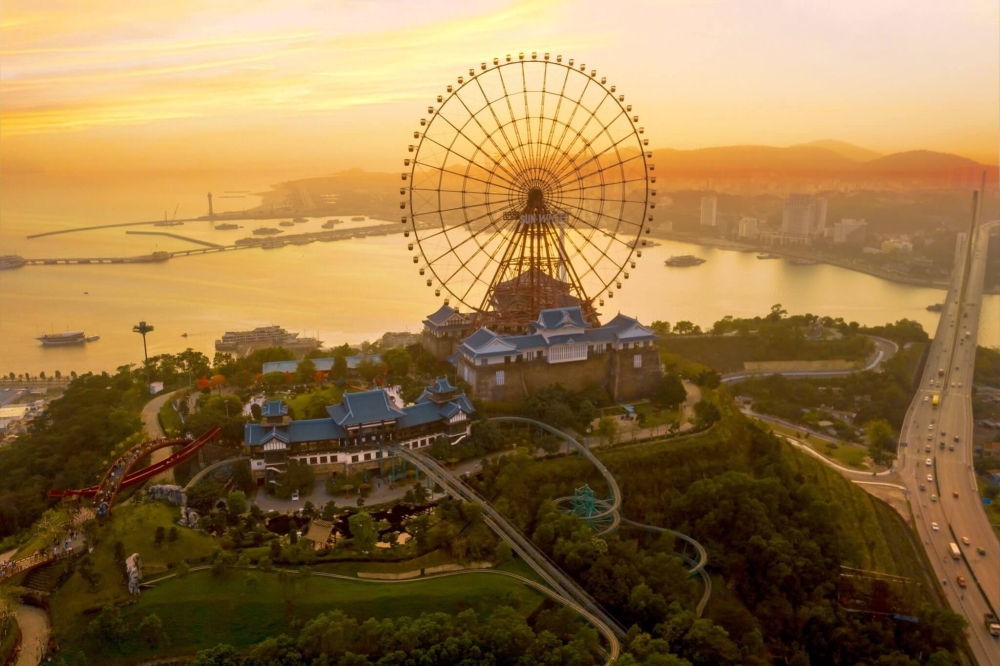1. Overview of Xuan Lien National Park
1.1. Geographical location and area of Xuan Lien National Park
Xuan Lien National Park is located in Thuong Xuan commune, western Thanh Hoa province, about 65 km from the city center.
The management area of Xuan Lien National Park reaches 25,601.98 hectares, divided into several functional zones: a strictly protected area of 10,869.18 hectares, an ecological restoration area of 10,393.38 hectares, and a service and administrative area of 2,553.67 hectares.

This is an ancient forest with many precious tree species dating back thousands of years. (Source: Collected)
Additionally, a 33,500-hectare buffer zone surrounding it helps protect the core forest area. This place is also an important water source for Cua Dat Lake and Chu River, contributing to climate regulation and disaster reduction for the entire region. Streams originating from the park bring cool, fresh water to millions of people downstream, affirming its essential ecological impact.
1.2. History of Formation and Development of Xuan Lien National Park
The history of Xuan Lien National Park began in 1999 when this area was established as a nature reserve. Over more than 25 years, it has continuously carried out its mission to protect the country's precious ecological values.
In February 2025, Xuan Lien National Park was officially recognized as Vietnam's 35th National Park under Decision No. 400/QD-UBND. This milestone is a recognition of efforts to preserve nature and simultaneously opens up new directions for ecotourism, scientific research, and environmental education.
This transformation aligns with the strategy for developing the system of special-use forests in Thanh Hoa as well as nationwide, aiming to combine nature conservation with sustainable economic development. Xuan Lien National Park now has the necessary legal framework and resources to fulfill its set missions.
1.3. Functional Zoning of Xuan Lien National Park
The space of Xuan Lien National Park is organized into three functional zones, each with a specific role.
The strictly protected zone is where precious pristine forest areas are concentrated, and rare fauna and flora here are maximally protected.
The ecological restoration zone is responsible for restoring previously impacted forest areas with support from advanced scientific solutions. Step by step, the forest canopy is revived, returning its original pristine beauty to the ecosystem.
The service and administrative zone is the center for ecotourism, research, and environmental education activities.
This is also where management facilities, information centers, and services for visitors are located. This rational distribution helps Xuan Lien National Park effectively meet conservation goals, develop tourism, and spread the message of nature protection.
2. Biodiversity Values at Xuan Lien National Park
Visiting Xuan Lien National Park, you will be amazed by the biological richness it possesses: 1,228 species of higher plants, belonging to 659 genera, 181 families. Among them are 56 rare plant species, including 11 species listed in the IUCN Red List and 39 species recorded in the Vietnam Red Data Book.
Ancient trees such as Po mu, Sa moc dau, Vu huong, Sen mat are symbols of Xuan Lien forest. Many trees have been recognized as Vietnamese Heritage Trees, demonstrating the long-standing value of the over 5,000 hectares of pristine forest that remain almost intact.
The animal world here is also diverse with 1,811 species, belonging to 241 families, 46 orders, and 4 classes. There are up to 94 rare species, including 34 species classified by IUCN as globally threatened and 56 species listed in the Vietnam Red Data Book. Notably, the White-cheeked Gibbon (Vuon den ma trang) is a prominent endemic species, with about 62 groups, nearly 200 individuals – considered the largest population in Vietnam and the world.
Xuan Lien is also one of the few places in Vietnam where the Roosevelt's Muntjac (Pu Hoat Muntjac) is still recorded – a species once thought to be extinct since 1929. Additionally, there are Vooc xam, Rua hop tran vang Bac, Cay voi huong, and many other endemic animal species.
Thanks to its location between the Northwest and North Central transition zones, Xuan Lien National Park plays a strategic role in protecting the water source for the Chu River and regulating the ecosystem of the entire region. This unique ecosystem contributes to reducing the negative impacts of climate change, supporting disaster prevention, and creating a foundation for the stable economic development of local communities.
3. Outstanding Experiences at Xuan Lien National Park
3.1. Trekking, Exploring the Pristine Forest Nature
Small trails winding through the old-growth forest in Xuan Lien National Park promise an unforgettable trekking journey for any nature lover. Each step on the well-planned paths will reveal different scenery, from waterfalls hidden deep in the forest to ancient trees hundreds of years old standing tall amidst the wilderness.
The trekking route to conquer Pu Gio peak is a popular and attractive choice, gathering majestic mountain beauty along with clear streams like Khao stream, Ken stream. Along the way, you will have the opportunity to observe the rich flora, with many plant species found only in Xuan Lien National Park.
The cool, fresh air year-round, along with pleasant weather, is very suitable for organizing long trekking trips. The sounds of birds singing, leaves rustling in the wind, and streams babbling blend into a symphony of nature. This is truly an opportunity to escape the hustle and bustle of daily life and immerse yourself in the green, pure space of the mountains and forests.
3.2. Cultural Exchange with Ethnic Minority Communities in the Buffer Zone
The buffer zone of Xuan Lien National Park is the long-standing home of the Thai, Muong, and Dao ethnic communities. Stilt houses located in valleys or on mountainsides are not only places of residence but also preserve many unique cultural values for visitors to explore.
Spending a night in a stilt house offers a special sense of familiarity with nature and the locals. In the evening, gathering around the fire, enjoying traditional dishes like com lam, thit lon ban, ca suoi nuong, all carry the distinct flavors of the mountains. Folk melodies echoing in the cool air create an intimate atmosphere, leaving unforgettable impressions.
In some communes here, people still preserve strong traditional customs, from seasonal festivals to folk art activities, handicrafts, and daily life closely connected with nature. This is an opportunity for you to immerse yourself in the lives of these ethnic groups, discover their survival secrets, and their harmonious relationship with the mountains and forests.
3.3. Cloud Hunting Photography at Xuan Lien's Highest Peak
Pu Gio peak, at an altitude of 1,620 m, is the ideal spot for cloud gazing in Xuan Lien National Park as well as in Thanh Hoa. The best time for cloud hunting is from October to April of the following year, when high humidity contributes to the formation of floating sea clouds.
To capture beautiful moments, you should depart early in the morning or choose days after rain, when the air is clear and the clouds are dense. The vast landscape with clouds covering the mountain ranges creates a fairy-tale setting, making everyone who visits unforgettable by the overwhelming natural beauty.
Preparing a camera with a suitable lens and a tripod will help you capture every impressive moment on the mountaintop. Besides photography, standing on Pu Gio and observing the panoramic view of Xuan Lien National Park spreading below offers a feeling of touching the boundary between heaven and earth, a gentle yet profoundly impressive experience for the soul.
4. Guide to Traveling to Xuan Lien National Park in 2025
4.1. From Hanoi to Xuan Lien National Park
Departing from Hanoi, you can choose a bus or a private car via the Ho Chi Minh Road, heading towards Thuong Xuan district of Thanh Hoa. The journey takes about 4-5 hours, along winding mountain passes, with beautiful mountain scenery on the sides.
Another convenient option is to fly from Hanoi to Tho Xuan Airport, then continue to Xuan Lien National Park by car or taxi. The distance from the airport to the park is only about 40 km, saving significant time and reducing fatigue from a long journey.
The Ho Chi Minh Road section through Thanh Hoa has been significantly improved, but as you go deeper into the park area, there are still a few winding mountain pass sections. You should check your vehicle's condition carefully and ensure you have enough fuel for the journey to ensure a smooth trip.
4.2. Traveling from Ho Chi Minh City and Other Provinces to Xuan Lien
Visitors departing from Ho Chi Minh City as well as distant provinces can take a direct flight to Tho Xuan Airport and continue their journey by taxi or rented vehicle to Xuan Lien National Park. Choosing to fly significantly shortens travel time, convenient for those who want to save effort.
Flight ticket prices usually range from 1 to 2 million VND for a one-way trip, depending on the time and airline. For nearby localities, you can also opt for shuttle buses with costs ranging from 100,000 to 150,000 VND per trip, suitable for budget-conscious travelers.
The routes to Xuan Lien National Park have complete and convenient signage, making them easily accessible. However, you should proactively check the weather conditions before departing, especially avoiding traveling on days with heavy rain to ensure a complete journey.
4.3. Transportation within Xuan Lien National Park
After arriving at Xuan Lien National Park, visitors can choose to rent a motorbike or an electric car to explore the areas within the park. Motorbikes are suitable for those who prefer independent exploration and are familiar with mountain road conditions. Electric cars offer a quiet experience, aligning with ecotourism and environmental protection principles.
For a more in-depth experience, joining trekking tours with local guides is a reasonable choice. These guides not only have a thorough understanding of the terrain but also frequently share interesting insights about the ecosystem and the peaceful culture of the communities around the park.
Additionally, motorbike taxi services or internal electric cars are readily available to take you between attractions. All trekking routes and important check-in points are professionally organized, with maximum safety measures for tourists.
Besides visiting Xuan Lien National Park, visitors can combine their trip with a visit to Sun World Sam Son - a prominent entertainment paradise on the coast of Sam Son. This modern complex impresses with its world-class game system, record-breaking water slides, and rich play areas suitable for the whole family. Here, visitors will enjoy a vibrant, energetic atmosphere and experience high-quality services according to international standards, where relaxation and entertainment blend perfectly in every moment.

Immerse yourself in the cool water and have endless fun at the entertainment paradise Sun World Sam Son. (Source: Business and Marketing Magazine)
Xuan Lien National Park promises to be a prominent destination in 2025 with a diverse special-use forest ecosystem, many rare flora and fauna species, and unique cultural and natural experiences. The journey to explore this place can be combined with Sam Son Sea Square to enjoy the blend of pristine nature and vibrant sea. Visitors, please come, feel, and join hands to protect this precious green treasure.
.








